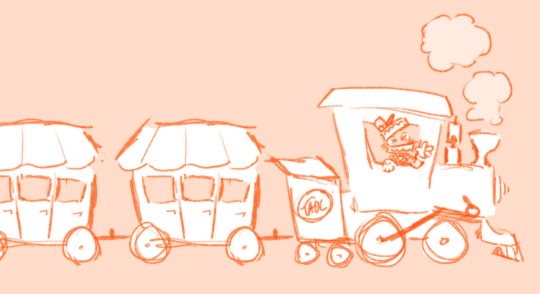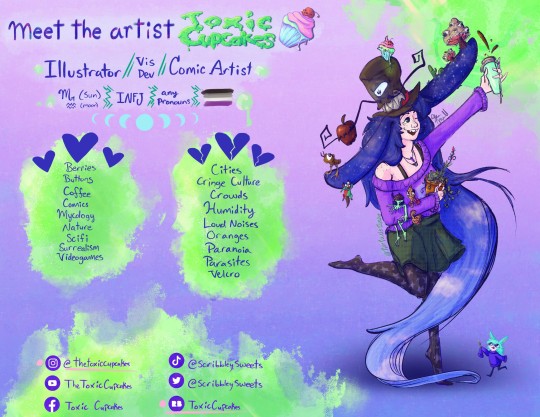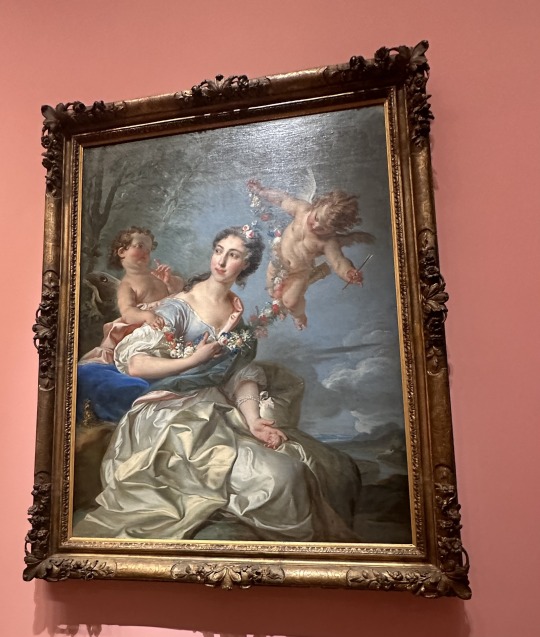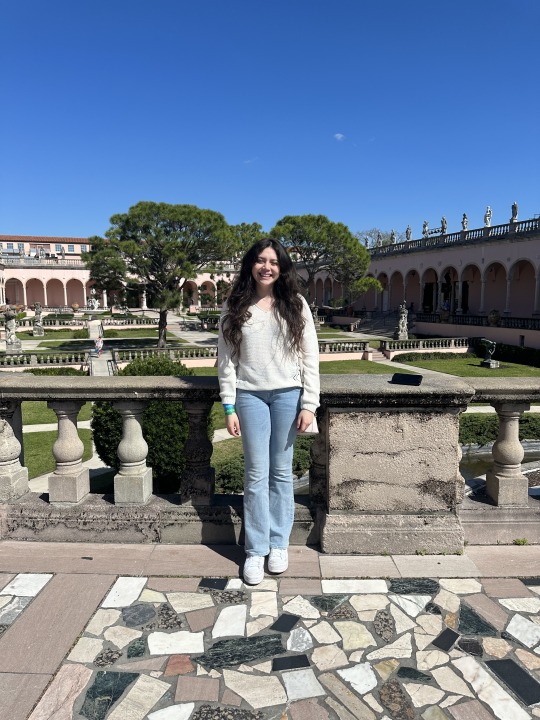#ringling illustration
Explore tagged Tumblr posts
Text

⚡️ Ringling College of Art & Design senior self portrait 2024 ⚡️
#rcad#ringling college of art and design#ringling College#ringling illustration#self portrait#south park#pikachu#kandi bracelet
15 notes
·
View notes
Text


Some portraits from my Figure Painting class!
#oil painting#oil on canvas#painting#portrait#portfolio#profile#figure sketch#figure drawing#figure painting#rcad#ringling college of art and design#illustration#illustrative art
7 notes
·
View notes
Text

The Vertical Gardener
Capable of holding over 100 plants, this Bot helps you care and maintain your garden. Superstitious gardeners rumor that this bot can feel through this plants’ roots like nerves.
Realistically, I wouldn’t have a personal robot, but this guy makes me smile :)
21 notes
·
View notes
Text

Ringling Bros and Barnum & Bailey Combined Circus - Prairie Bill And His Congress Of Rough Riders Of The World, 1933 poster
#1933#1930s#vintage#circus#ringling bros and barnum & bailey#painting#art#illustration#poster#circus poster
44 notes
·
View notes
Text

Oldie but goldie; The Life of an Animation Student
#artists on tumblr#art#artwork#illustration#animation#animation art#ringling college#ringling#rcad#art student#art school#art college#sketch#sketching#comic art#comics#comic#short comic
3 notes
·
View notes
Text

practice with procreate- freehand, mirror pic
#animation#artists on tumblr#artwork#digital art#digital illustration#digital painting#drawing#painting#portrait#sketch#ringling#procreate#pastel#illustration
2 notes
·
View notes
Text







Calder was born in 1898, the second child of artist parents—his father was a sculptor and his mother a painter. In his mid-twenties, he moved to New York City, where he studied at the Art Students League and worked at the National Police Gazette, illustrating sporting events and the Ringling Bros. and Barnum & Bailey Circus. Shortly after his move to Paris in 1926, Calder created his Cirque Calder (1926–31), a complex and unique body of art. It wasn’t long before his performances of the Cirque captured the attention of the Parisian avant-garde.
In 1931, a significant turning point in Calder’s artistic career occurred when he created his first kinetic nonobjective sculpture and gave form to an entirely new type of art. Some of the earliest of these objects moved by motors and were dubbed “mobiles” by Marcel Duchamp—in French, mobile refers to both “motion” and “motive.” Calder soon abandoned the mechanical aspects of these works and developed suspended mobiles that would undulate on their own with the air's currents. In response to Duchamp, Jean Arp named Calder's stationary objects “stabiles” as a means of differentiating them.
Calder returned to live in the United States with his wife, Louisa, in 1933, purchasing a dilapidated farmhouse in the rural town of Roxbury, Connecticut. It was there that he made his first sculptures for the outdoors, installing large-scale standing mobiles among the rolling hills of his property. In 1943, James Johnson Sweeney and Duchamp organized a major retrospective exhibition at the Museum of Modern Art, New York, which catapulted Calder to the forefront of the New York art world and cemented his status as one of the premier American contemporary artists.
In 1953, Calder and Louisa moved back to France, ultimately settling in the small town of Saché in the Indre-et-Loire. Calder shifted his focus to large-scale commissioned works, which would dominate his practice in the last decades of his life. These included such works as Spirale (1958) for the UNESCO headquarters in Paris and Flamingo (1973) for Chicago’s Federal Center Plaza. Calder died at the age of seventy-eight in 1976, a few weeks after his major retrospective, Calder’s Universe, opened at the Whitney Museum of American Art, New York.
(Pace Gallery)
54 notes
·
View notes
Text

Ok I have a little head-cannon that I'm going to put into my fanfic because it's my fanfic and I can do what I want. We don't see Caine's room, so I like to think he lives on the train cars of a circus train that travels the grounds. The Ringling bros. had a really spiffy one and think he would too, but more wacky. Maybe the interior of one of the cars would be more refined, who knows? Also I can't draw trains can u tell
Would you guys like a little sneak peak of the next chapter??? 👀
Ok here it is
Caine didn’t have a room like the rest of the cast. He had a small series of rooms, or train cars, that were constantly pulled along by a train that traveled the circus grounds. The interior of the car he was in was mainly the same shade of his magenta suit, with accents of black. The ground rocked subtly against the rumbling tracks as the over saturated scenery rushed by. The rumbling didn’t bother him, he preferred floating anyway. A selection of books sat on a pristine bookshelf, all with matching magenta covers. “Snow White” one book’s spine read. He picked it up and flipped to the first page. Best to know your source material before making any sort of adaptation. A circular icon appeared over the ringleader’s head. It spun in circles, static overtaking his usually multicolored eyes. A horizontal bar appeared above Caine. “LOADING CONTENT”. Every now and then, a page would turn on its own, and the horizontal bar would progress a little further.
Also, I don't think he "reads", I think he downloads content. This was the best way I could think of illustrating that 🌹
#tadc fanart#tadc#the amazing digital circus#the amazing digital circus fanart#the amazing digital circus headcannon#the amazing digital circus Caine
18 notes
·
View notes
Text

Hello, I'm Sky/Storm!!! I graduated from college a year ago and I'm a silly Illustrator who does a wide variety of artwork, from spot illustrations to concept art, especially creature design! I also tend to make comics!
Majority of my latest works are more Sci-fi & Surreal based. If you like comics and Sci-Fi, you may be interested in a Universe that I have been developing for years, with two graphic novels in the works, AND a mini series featuring the characters from one of my future graphic novels, Astral Anomalies!
I'm moving most of my stuff to tumblr due to Ai scraping and the poor algorithm of most other social medias. Plus, I think I might have a better audience here for the type of work I make.
TLDR: I make alot of different art, but mostly original scifi based concepts and comics. So if you can please reblog and share this it would mean the world to me!💕
🌟🌟 5/5 slots open for commissions 🌟🌟
#artist profile#comic artist#artists on tumblr#illustrators on tumblr#witchcraft#pride#lgbtq+#illustration#portrait#art#comics#sci fi art#surreal artist#webcomic#web series#drawing#meet the artist#illustrators#pastel#steampunk#design#creature art#creature design#concept artist#space#sweet scribbles#thetoxiccupcakes#tc talks#boost#support
35 notes
·
View notes
Text





Calder was born in 1898, the second child of artist parents—his father was a sculptor and his mother a painter. In his mid-twenties, he moved to New York City, where he studied at the Art Students League and worked at the National Police Gazette, illustrating sporting events and the Ringling Bros. and Barnum & Bailey Circus. Shortly after his move to Paris in 1926, Calder created his Cirque Calder (1926–31), a complex and unique body of art. It wasn’t long before his performances of the Cirque captured the attention of the Parisian avant-garde. In 1931, a significant turning point in Calder’s artistic career occurred when he created his first kinetic nonobjective sculpture and gave form to an entirely new type of art. Some of the earliest of these objects moved by motors and were dubbed “mobiles” by Marcel Duchamp—in French, mobile refers to both “motion” and “motive.” Calder soon abandoned the mechanical aspects of these works and developed suspended mobiles that would undulate on their own with the air’s currents. In response to Duchamp, Jean Arp named Calder’s stationary objects “stabiles” as a means of differentiating them. Calder returned to live in the United States with his wife, Louisa, in 1933, purchasing a dilapidated farmhouse in the rural town of Roxbury, Connecticut. It was there that he made his first sculptures for the outdoors, installing large-scale standing mobiles among the rolling hills of his property. In 1943, James Johnson Sweeney and Duchamp organized a major retrospective exhibition at the Museum of Modern Art, New York, which catapulted Calder to the forefront of the New York art world and cemented his status as one of the premier American contemporary artists. In 1953, Calder and Louisa moved back to France, ultimately settling in the small town of Saché in the Indre-et-Loire. Calder shifted his focus to large-scale commissioned works, which would dominate his practice in the last decades of his life. These included such works as Spirale (1958) for the UNESCO headquarters in Paris and Flamingo (1973) for Chicago’s Federal Center Plaza. Calder died at the age of seventy-eight in 1976, a few weeks after his major retrospective, Calder’s Universe, opened at the Whitney Museum of American Art, New York. (Pace Gallery)
3 notes
·
View notes
Note
you don't have to say it if you don't want to, but what uni did you go to? (if you don't wanna tell, then, are there any other good artist universities you know about that you'd recommend?)
I’ve mentioned it before but in the name of “internet safety” I’ll just give you the schools I applied to (and got into all of them!! Hehe)
Rhode Island School of Design
Parsons School of Design (NYC)
Ringling College of Art & Design (Florida… my dad said if I ever went there he would never visit bc he hates Florida so much…..)
Savannah College of Art and Design (for profit but it’s a nice school and I love the town)
School of the Art Institute of Chicago (nice place but COLD in winter)
I also considered Cooper Union, CalArts, ArtCenter (Pasadena), Pratt (tho I think they ended their illustration program), MICA, FIT, and SVA.
Tbh tho it’s not *really* about the school you go to but how you study. You can go to the best school in the world and not get Jack shit in terms of a career if you don’t apply yourself. I know someone who went to a “lesser” art school and now works for Disney Animation bc he went full ham at school.
3 notes
·
View notes
Text
hi there :)
I'm an artist attending Ringling College of Art and Design to get my bachelors degree in illustration. I find inspiration in a lot of stuff, like Hollow Knight, Skyrim, the outdoors, horror series, dark ambient music, and more.
I'm really just here to have a good time and to post art.
Currently into: Hollow Knight, The Ritual (2017), The Call of Cthulhu, eldritch horrors.
I have a Ko-Fi where you can get prints and a Discord server as well!
https://discord.gg/T7rgebYjXk
HOLLOW KNIGHT AU LORE:
https://toyhou.se/Demgozellegs/characters/folder:6009805
#pinned post#art#oc art#digital painting#sketch#art wip#skyrim#the elder scrolls#argonian#my sona#artists on tumblr#oc artist#fanart#hollow knight#halo games#halo 3#halo art#i draw things#illustration#hollow knight hornet#the nightmare king
13 notes
·
View notes
Text
Virtual Sketchbook #3
Portrait of Madame de Bourbon-Conti as Venus

Picture: Taken from iPhone by Ashley Vasquez on 03/28/2024 at the Ringling Museum
The painting Portrait of Madame de Bourbon-Conti as Venus, made byNoel-Nicolas Coypel, is an oil on canvas that is 54.3 by 42 inches big and currently featured at the Ringling Museum of Arts. Coypel’s painting is a portrait of Elisabeth de Bourbon, Princess of Conti, who was quite beautiful and a subject of much attraction, as clearly depicted. The painting has the allure of a bright dream-like outside scenery alongside flowers and flowing silks that quickly catch people’s attention. There is a trend of light pastel colors such as light pink and white garments, a baby blue sky, and pale colors that highlight the pampered life of French court. Baby cupids also adorn Princess Elisabeth with pretty flowers, which remind the audience of her youth and charismatic charm. Coypel and Elisabeth clearly worked on creating her public image to feature this delicacy and goddess of love illusion through the balance of colors, dimensions, and rococo fragility. Being a fan of the Rococo style drew me into this painting, and while deeply inspecting it, I was reminded of feelings of love, attraction, and even womanhood because of the delicacy and love illusion imbedded within the oils, which I believe is exactly what Elisabeth and Coypel intended the audience to feel.
The Portrait of Madame de Bourbon-Conti is associated with the Rococo art style and was painted during the Enlightenment (18th century). Although the Enlightenments focused on scientific learning and philosophical ideas of life, liberty, and separation of church and power, there was a popular appeal with elite members communicating their wealth through rococo- styled art, interior design, architecture, and more (2.1 Shifting Sensibilities: The Enlightenment and Rococo, ART 188). Princess Elisabeth, being an enlightenment follower herself, illustrated this dramatic shift from the previous baroque style into the lively rococo style when depicting herself. She and Coypel worked on illustrating her image far away from the remote, aloof, and formal style into this delicacy, lighthearted elegance conveyed through light and pastel colors (portrait of Madame de Bourbon-Conti). Understanding the imagery and alluring beauty of this painting tells the audience that Coypel enjoyed painting natural beauty and depicting love and its allure through lightness and asymmetrical pose. Ringling described it as “This Rococo pose reminds us of the change and fragility that love encounters” (portrait of Madame de Bourbon-Conti). The message of great shift and nature beauty found with youth and bright accent is illustrated throughout the painting for the audience to see, as is the image of Elisabeth as a playful and charming goddess. There are also references to how the elite's pampered life and wealth through luscious silks and pearls. There are many references and illustrations to convey the message clearly.
Overall, I think the importance of this art is to bring a different perspective to a changing society. I think it creates this idealized perspective of wealth, love, and beauty. There is something about its specific naturalistic complexity, such as the princesses’ beauty compared to previous works of art, that makes it attractive; however, there’s also referenced to love with baby cupids and imaginary figures. I believe this painting was made to catch the audience’s attention to this dream-like scenery and entice us with beauty while reminding us of love. As a woman, I particularly felt drawn to its beauty.
Sources used:
2.1 Shifting Sensibilities: The Enlightenment and Rococo – ART 188. art188.lib.miamioh.edu/18th-and-19th-century-art/1-enlightenment-and-rococo.
PORTRAIT OF MADAME DE BOURBON-CONTI. ringlingdocents.org/pages/bourbon-conti.htm.
Ringling Photos:



2 notes
·
View notes
Text

First Illustration of the Semester! Theme is our Alter Ego doing something we’d never do. I could not be a surgeon
#my art#art#digital art#illustration#ringling college of art and design#alter ego#surgeon#tw gore#tw syringe
7 notes
·
View notes
Text






Here's a little playing card collection I made for Ringling College's 2023 Senior Illustration deck~~ It's super cool to see everyone's work put together as a little graduation memorabilia! BUT I've been debating on if I want to finish off the entire 52 deck of card designs ._. stay tuned and we'll see!!
#playing cards#card games#card design#art#artists on tumblr#small artist#small art account#illustration#solitaire
9 notes
·
View notes
Text



Alex Beck
Alex Beck is an award wining painter and illustrator from Richmond, Virginia. He received a bra from Ringling College of Art and Design in Sarasota, Fl and then continued his training at the Illustration Academy in Kansas City, Missouri. His work mainly centers around people’s nostalgic memories as he draws his inspiration from different locations and old photo diaries. He often collages a number of photographs to reference his subject matter from and juxtaposes ordinary portraits with a variety of scenarios, in efforts to create conversation between his life and the life of others. The work itself also gets collaged at times with pieces that went unfinished and then painted next to.
Although Beck’s education has focused on illustration, he has moved away from the discipline in favor of a less literal form of painting. “I am not a storyteller,” he says. “I paint mood.”
Beck considers himself to be a “gestural realist.”
“I exploit realism in a way I can completely destroy it,” he explains. “ ‘Gestural realist’ leaves a lot open to interpretation.”
I love how gestural his paintings art. There seem to be imperfections in just the right places and his use of color seems so dynamic. I hope to incorporate a similar style in my own series despite this being a style I am not used to.
4 notes
·
View notes